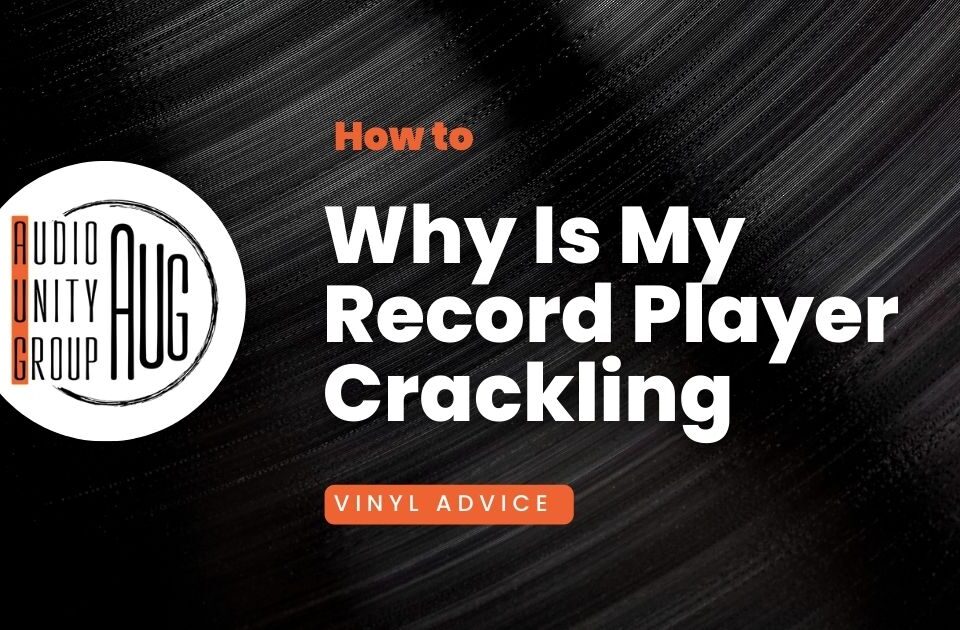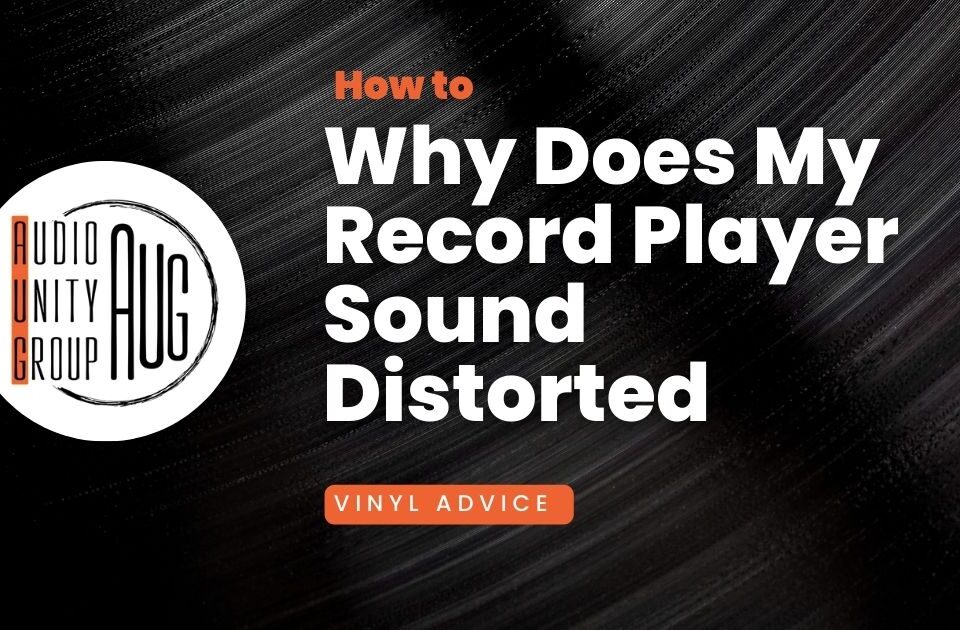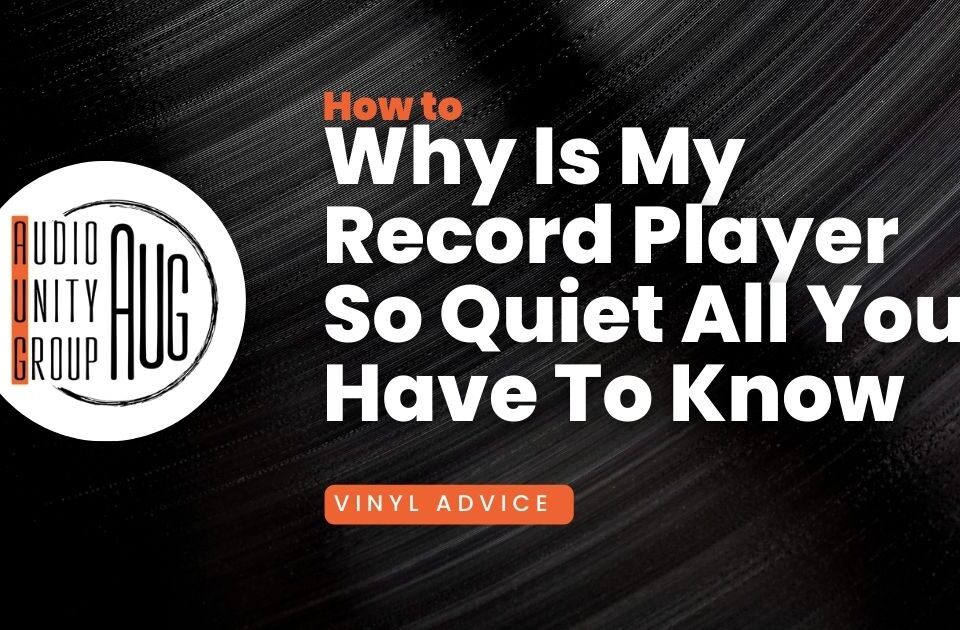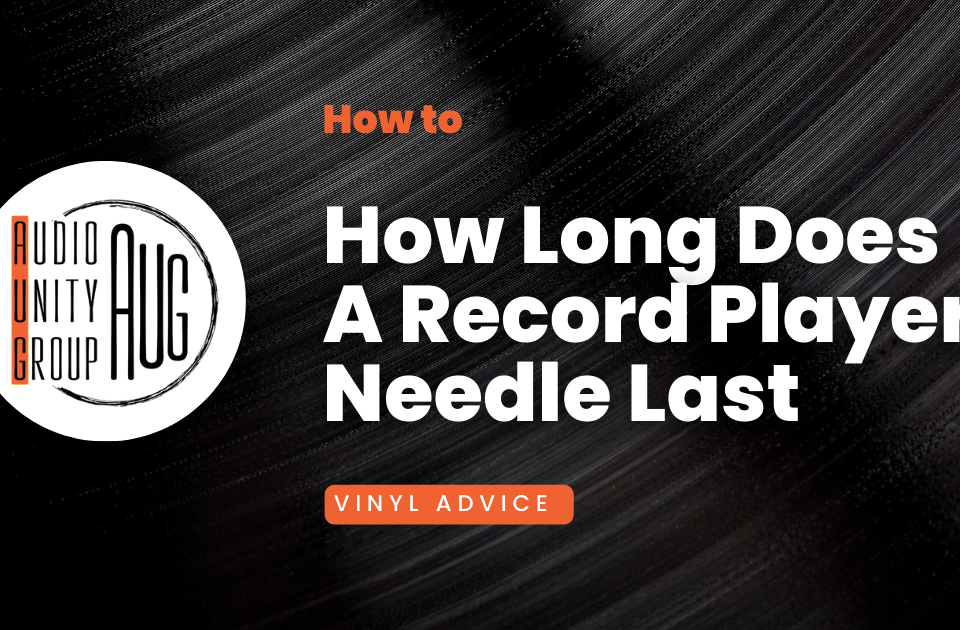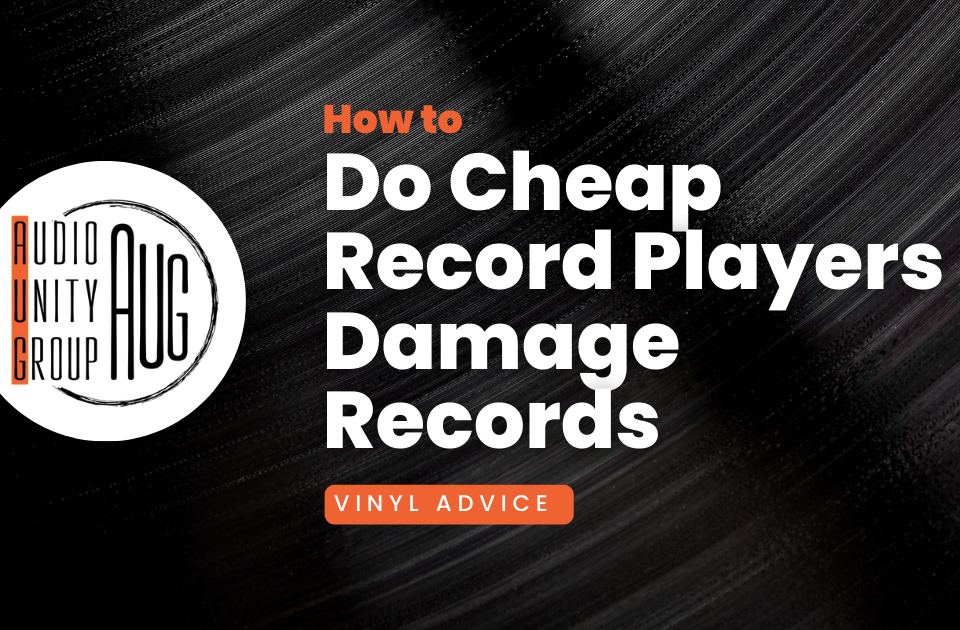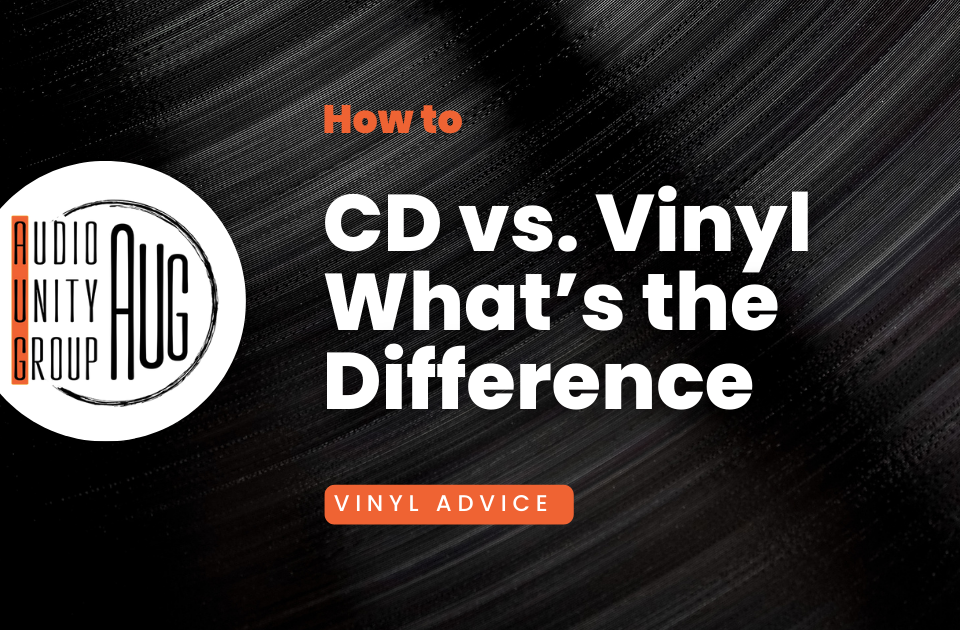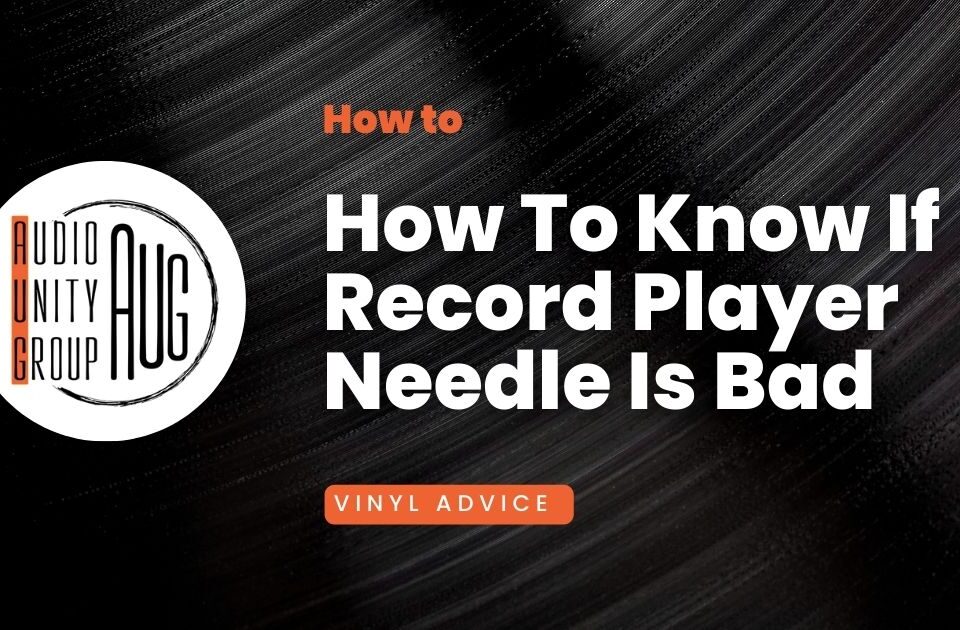Best Record Player for Beginners: Top 5 Models in 2025
April 22, 2023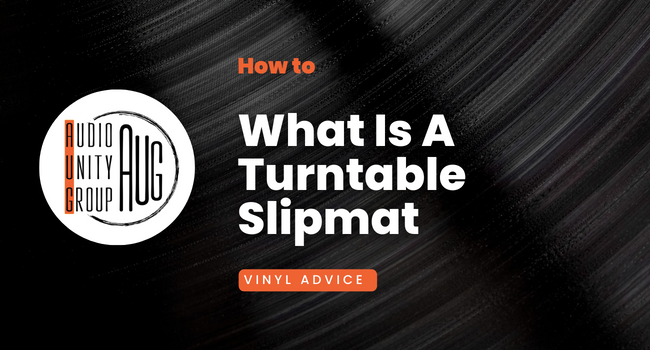
What Is A Turntable Slipmat? All You Should Know
April 28, 2023Last Updated on June 9, 2023 by Tom S. Ray
How To Store Vinyl Records: Best Ways And What To Avoid
As a vinyl manufacturer, we know exactly how important it is to store your vinyl records safely. No one wants to see their collection getting damaged over time.
In this blog post, we’ll provide detailed guidelines on how you can store vinyl records properly so that they continue to bring joy for many years to come.
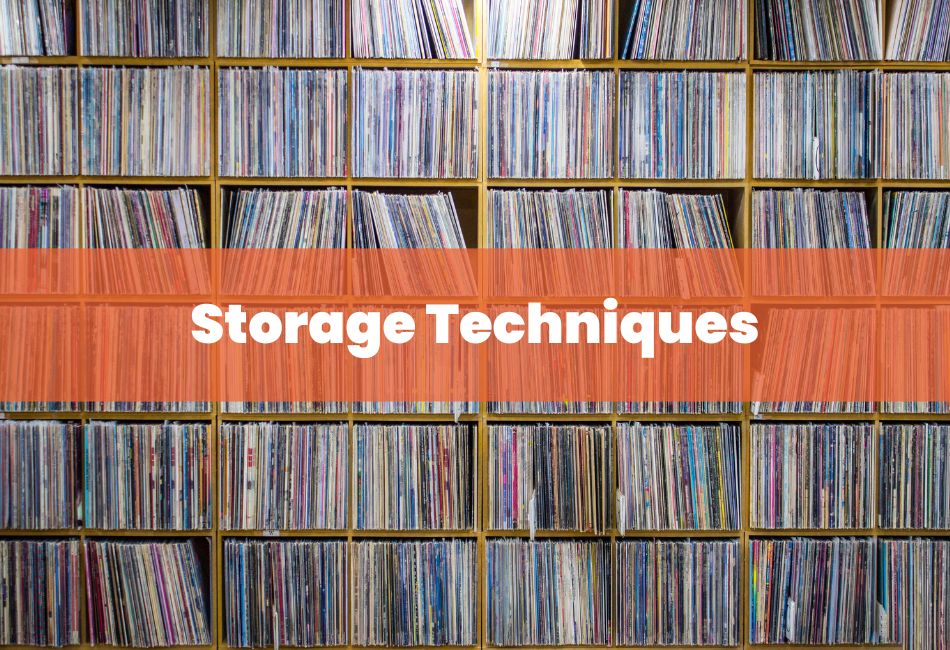
Why Proper Storage Techniques Are Important For Vinyl Records
Proper storage techniques are essential to protect valuable vinyl records from damage, warping and mould, as well as preserving their sound quality.
Keeping Records Safe From Damage
One of the most important factors to consider is how to store records vertically, as this will help avoid warping, which can permanently damage your records.
Warping occurs when the surface area of a record becomes distorted due to uneven heat distribution.
The best way to prevent this from happening is by ensuring that you store your collections vertically so that air circulates around each disc evenly, helping maintain constant temperatures within a record’s storage environment.
When considering where best to place your collection, look for dedicated vinyl storage solutions such as crates or shelves specifically made for storing LPs and 45s.
These have been designed with built-in dividers making it easier keep all sizes of records upright safely separated from other titles in their collection.
Protecting Records From Warping And Mould
Warping can occur when heat causes the record’s plastic shell to soften, bend or even bubble—resulting in an unplayable record.
Mould growth can not only damage the sound quality of your record, but also create a health hazard if inhaled.
To avoid warping, we have to ensure that our records are stored upright rather than flat, as this will help reduce any possible pressure on their surface area.
We should also keep them away from direct sunlight and high temperatures such as attics or basements since they could cause irreparable damage if exposed for too long.
It’s best to store them in cool dry places with little humidity where condensation will not form on them and attract mould spores over time.
The inner and outer sleeves of the records should be regularly inspected for tears and replaced if necessary so that no dust enters into contact with the albums’ surface area causing scratches and static noise during playback which ultimately would affect audio quality.
Preserving Sound Quality
How your records are stored has a major impact on their sound quality.
It doesn’t matter if you’re an experience vinyl collector or just started your journey with the vinyl records.
Dust, dirt and humidity can all cause degradation over time if not kept in check.
Store vinyl records vertically whenever possible to lessen any pressure being applied which could otherwise cause them to warp or crack.
Inner and outer sleeves can also protect your albums from scratches, as well as dust and dirt build-up which can damage them over time.
Be sure to handle with care when flipping through your collection too – avoid dragging record towers across surfaces that may scratch and create permanent noise within playback (often referred to as ‘clicks’).
Archival record boxes are specially designed containers made specifically for storing LPs upright while minimizing pressure pushing down on the discs themselves- a major bonus for preserving sound quality!
Ideally, keep records away from windows and direct sunlight, store in cool dry places such as attics or basements for long-term storage of albums, use shelf dividers or separators even between LP jackets which can help reduce scratching or warping due to decreased clutter during accessioning too!
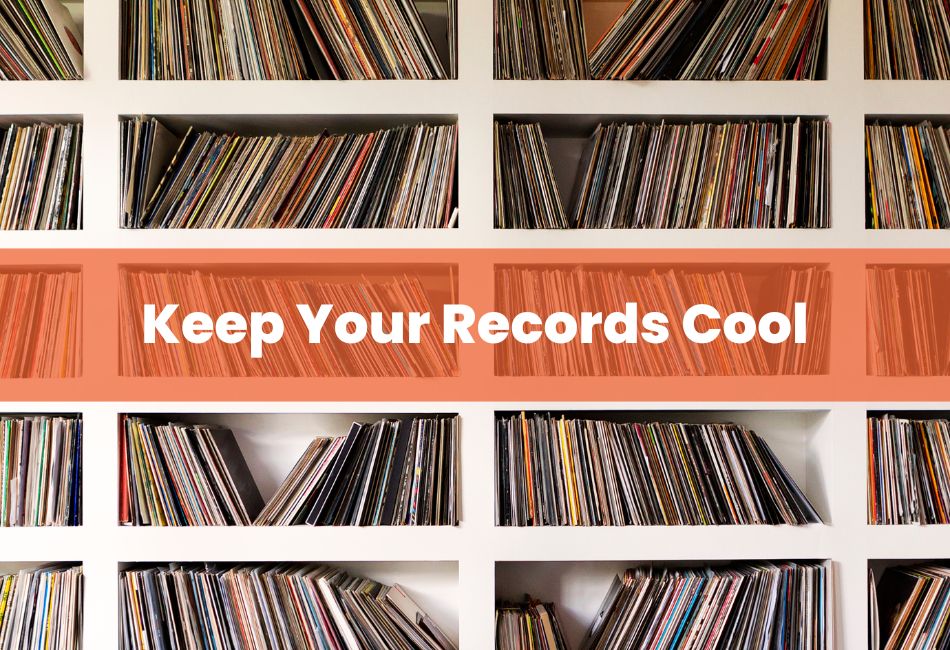
Effective Storage Techniques For Vinyl Records
To protect records from damage and preserve their sound quality, they should be stored vertically in a record crate, shelf or cabinet designed for vinyl records.
Store Records Vertically To Avoid Warping
Storing vinyl records vertically is the most effective way to prevent them from warping over time.
Vinyl records warp due to changes in temperature and humidity, so it is important to store them in cooler, drier conditions.
Stacking them horizontally can cause greater strain on the grooves of each record, leading to distortion and degradation of sound quality. To avoid all these issues, keep your records stored upright at all times.
The best storage solutions for vertical storage are divider-style crates or shelves that are designed for this purpose.
These provide plenty of space between each album, allowing room for air circulation which helps improves cooling efficiency and prevents damage caused by heat transfer.
Keep Records In A Dry And Cool Place To Prevent Mould
Maintaining a stable environment is one of the most important steps in protecting vinyl records from mould and other potentially damaging elements.
To do this, you should always store your records in a dry place with temperatures ranging between 60-70 degrees Fahrenheit (19-21c) for optimal results.
Fluctuations in either temperature or humidity can cause changes to occur within the vinyl, such as warping and even mould growth.
For these reasons, it’s important to: Avoid storing vinyl near heating vents; Ensure adequate ventilation around the place where you are keeping your albums;
Refrain from leaving them outdoors overnight if possible; And consider getting an air conditioning system (or dehumidifier) that can help maintain proper climate control.
In addition to using AC units, you may find that opening windows on cooler days or investing in moisture traps could also be beneficial for maintaining ideal storage conditions.
Avoid Direct Sunlight And Extreme Temperatures
Sunlight can cause the vinyl, as well as labels, album covers and artwork, to fade almost instantly – significantly reducing the value of records or even making them unplayable.
Temperature fluctuations can also wreak havoc on a record collection; too high temperatures will potentially melt the grooves into one another and distorted audio playback ensues while too cold temperatures can cause warping that may damage some tracks beyond hope of repair – resulting in a crackly listening experience.
When it comes to storing your records properly temperature is key.
Keep stored at room temperature away from windows (67-70 degrees Fahrenheit or 19-21 C).
Remember opt for inner and outer sleeves when possible – not only does this prevent scratches but it further removes need for contact with air which could attract mould spores over time.
Use Inner And Outer Sleeves To Prevent Scratches And Dust
When storing your vinyl records, it is important to keep them protected from scratches, dust, and other damage.
One of the most effective ways to do so is by using inner and outer sleeves.
Inner sleeves are designed to fit inside the record sleeve.
These come in various materials such as polyethylene LDPE or higher grade polypropylene HPDM which act as an additional protective layer for your vinyl records.
Outer sleeves are essentially extra-thick covers that you slip over your albums before putting them away and act as an additional protection against dust, water damage and any other outside elements that may cause harm.
Handle Records With Care
Keeping vinyl records in good condition is essential for preserving their sound quality and helping them last longer.
The best way to handle a record is by holding it by its edges rather than grasping the whole disc.
This prevents the oils on your fingers from being transferred onto the grooves of the record which can cause damage, create noise and reduce sound quality.
It’s also important to avoid touching any labels or artwork as this could leave dirt behind that can scratch at other parts of your collection over time.
A simple, yet effective rule of thumb when handling records is “Don’t touch the grooves!”.
In addition, keeping your vinyl records clean helps preserve them – just make sure you use a soft brush or microfiber cloth specifically designed for cleaning records without damaging them.
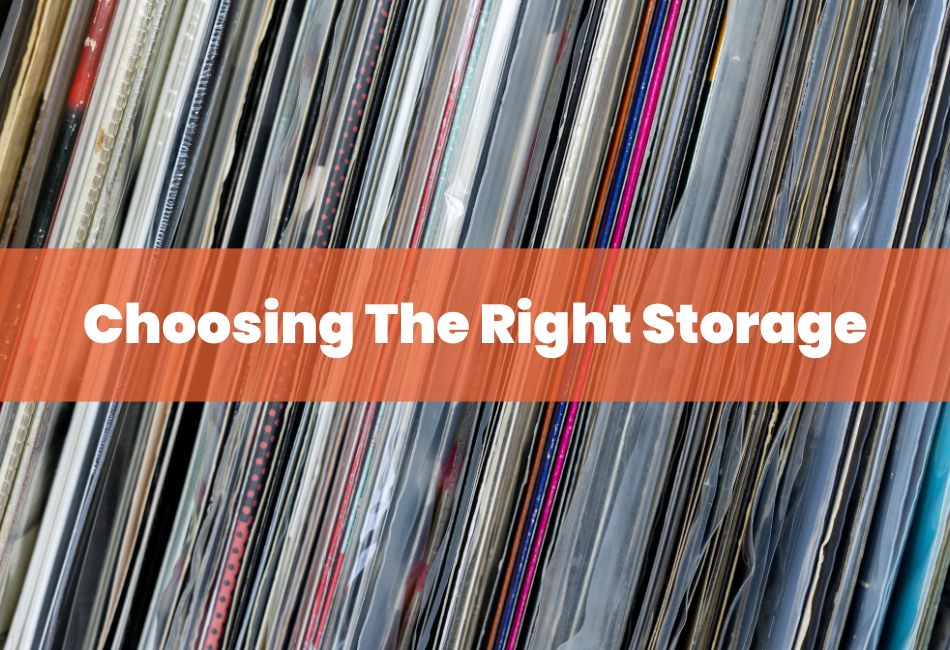
Choosing The Right Storage For Vinyl Records
When selecting the best storage container for your vinyl collection, look for record crates, shelves or cabinets specifically designed to store records in a vertical manner.
Use Record Crates, Shelves Or Cabinets Designed For Vinyl Records
The best option is to use record crates, shelves or cabinets specifically designed for vinyl records.
These storage solutions are specifically designed with the condition of vinyl in mind and can help prolong its life span.
The size of the container is important when selecting a suitable shelf/crate/cabinet because it affects how much space there is between each record.
Keeping adequate space between each record by utilising dividers or separate boxes will minimize chances of damage caused by pressure on one side pushing into another record.
On longer shelves without built-in dividers consider using smaller boxes like long slices of picture frames so that they fit better together with less transition when sliding out any particular album.
Consider The Size Of The Container For Your Collection
Records that are packed too tightly together in containers can become damaged due to the weight placed on them by other records.
This can cause warping or other damage including scratches, abrasions and discoloration.
Having correctly sized storage solutions for your collection will ensure that each LP has adequate breathing room and provide maximum protection from dust and dirt as well as further damage such as scuffs, scrapes and mould.
When selecting an appropriate container, you’ll want to measure the dimensions of your records – both 12″ LPs (width: 30cm) or 7” singles (width: 15cm).
You’ll also need to consider how many records you plan to store; lidded record boxes typically designed hold around 65-75 twelve inch long-playing albums which should be suitable for most collections.
Alternatively archival quality boxes are ideal for collecting larger numbers of vinyl safely stacked vertically where they won’t have pressure applied upon them leading potentially damaging warps over time.
Avoid Plastic Containers As They Can Emit Harmful Gases
While storing your vintage record collection may seem simple enough, using plastic containers for storage should be avoided at all costs!
Plastic can often emit harmful gases known as off-gassing that can corrupt and deteriorate the audio quality or even damage the integrity of your precious record collection over time.
It’s important to use alternative storage methods such as metal boxes lined with soft fabric or archival record boxes designed specifically for storing vinyl records in order to protect them from harm.
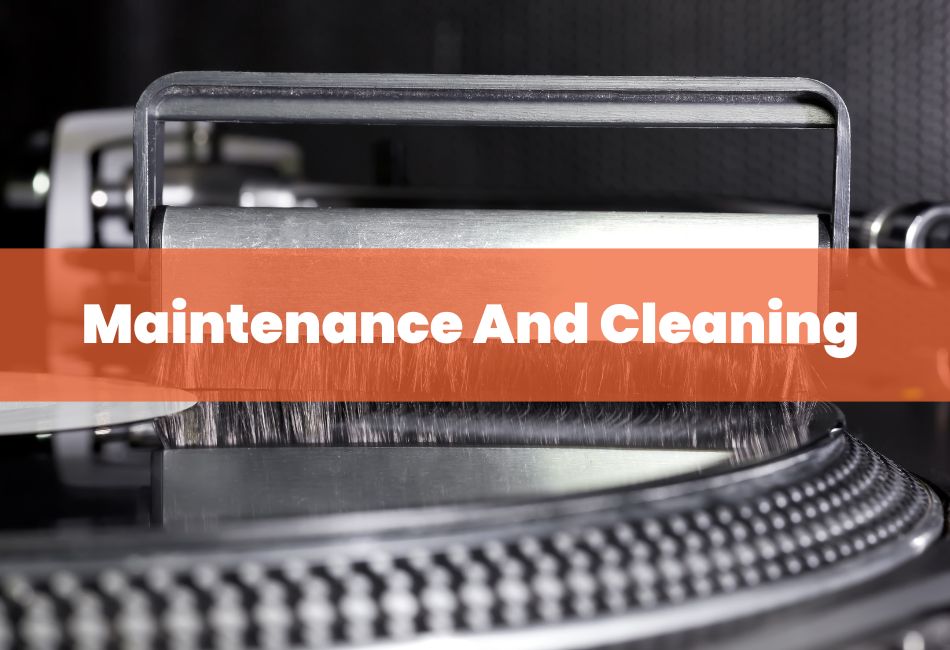
Maintenance And Cleaning Tips For Vinyl Records
Regularly clean records and sleeves using a soft brush or microfiber cloth, use record-cleaning machines for deep cleaning, replace worn-out inner sleeves, and store in a clean environment to ensure the best sound quality.
Regularly Clean Records And Sleeves With A Soft Brush Or Microfiber Cloth
Using a soft brush or microfiber cloth to regularly clean vinyl records and sleeves is one of the best ways of preserving their quality.
Accumulation of dust, dirt, and debris on your record grooves can have an adverse effect on the sound quality when playing them back.
While cleaning isn’t necessary every time you play a record, it is recommended that you give all your LPs a thorough clean after several listens to prevent wear and tear from affecting performance.
Using carbon fibre brushes are considered better than anti-static brushes for preventing any damage to delicate grooves during cleaning.
When using these tools, make sure you hold them at 45 degrees as this will help sweep off any particles without causing further damage.
Don’t forget to clean the cables and wiring of your turntable too as this always is a good habit to have.
Use A Record Cleaning Machine For Deep Cleaning
Using a record cleaning machine is still considered by many the best way to deep clean vinyl records.
Especially if you have an extensive collection, these machines make a powerful investment for their longevity and sound quality for years to come.
The machine employs specialised brushes that remove dust, dirt and old fingerprints from the grooves of your valuable LPs.
These brushes delicately scrub away any debris picked up in between plays whilst also protecting artist’s original intent.
Replace Worn Out Inner Sleeves
Replacing worn-out inner sleeves is an important part of maintaining the quality and condition of your vinyl records.
Inner sleeves provide a protective layer between each record and its outer sleeve, helping to keep out dust, dirt and other debris from damaging the coveted grooves on our favourite albums.
Worn-out stock inner sleeves are usually made with highly porous material that can absorb oils from skin contact or allow moisture through, which can lead to warped records over time and possibly cause damage like cracks.
The presence of mould or mildew spores coming in contact with the vinyl, as well as gumming mailers attached to certain types of stock inner sleeves may also contribute to accelerated degradation due transportation vibrations and humidity levels over long periods of time.
Look for signs of thinning around edges if you still have stock papers inside; often they become discoloured where extra moisture accumulates between them – this typically indicates warping caused by deterioration.
Store Records In A Clean Environment
Having a clean and dust-free environment is essential for any music lover aiming to keep their vinyl record collection in the best shape possible.
Dust, dirt, mould, mildew and other contaminants can cause damage to records over time if they are not kept properly stored.
This can lead to poor sound quality as well as physical defects such as warping or scratches.
That’s why it’s important to find an area with good air circulation – like a basement or attic – away from windows where you store your records.
It is also important that you clean your storage area on a regular basis so there isn’t an accumulation of dirt and dust within it.
All in All
Proper vinyl record storage is essential for protecting albums from damage, preserving sound quality and stopping the records from warping.
Keeping your collection in a dry and cool place away from direct sunlight with rights sleeves will help extend the lifespan of your favourite music.
Follow our advice and your collection will last longer, that’s for sure.
Thanks for reading.
Tom
FAQ
What is the best way to store vinyl records properly?
The best way to store vinyl records properly is by keeping them in sturdy, upright storage unit, protected by sleeves, and away from direct sunlight, heat, and humidity. Consider using vinyl record storage cabinets and dividers to help easily flip through your records and keep them organized.
How should records be positioned in a storage unit for optimal preservation?
Store records upright, like books on a shelf, to prevent warping and evenly distribute weight. Avoid stacking them on top of each other or at an angle, as this can cause damage to the records and their sleeves.
Are paper or plastic sleeves better for storing vinyl records?
While paper sleeves are commonly found in record jackets, plastic sleeves (preferably acid-free polyethylene) are actually the best option for protecting your records from dust, dirt, and potential damage. They also help prevent wear on record covers and eliminate the risk of chemicals in paper sleeves damaging the vinyl.
How important is the temperature and humidity for storing vinyl records?
Temperature and humidity play a crucial role in vinyl record storage. You’ll want to keep records in a cool, dry place, ideally between 65-70°F (18-21°C) and with a humidity of 45-50%. High heat or humidity can cause records to warp or become moldy over time.
What should I avoid while storing vinyl records?
Avoid exposing records to direct sunlight, which can cause warping and fading artwork. Keep records away from sources of heat, such as radiators, air vents, and electronic equipment. Also, do not stack records flat or use tight-fitting crates that may damage record covers and cause unnecessary pressure on the vinyl.
What are some of the best storage options for my vinyl record collection?
Some of the best storage options for vinyl records include dedicated record storage cabinets, modular shelving units, and custom-built storage solutions. It’s essential to choose a storage option that provides easy access, proper ventilation, and enough space to display and protect your collection.
Do I need dividers when organizing my vinyl records in a storage unit?
Dividers can help further organize your vinyl collection and make it easier to find specific albums. They can be useful in separating records by genre, artist, or other preferred categories. Divider use is entirely up to personal preference, but they can be a helpful addition to your storage system.
How often should I clean my vinyl records?
Clean your vinyl records periodically, as needed or before each play, to remove dust and debris that can accumulate over time. Regular cleaning helps protect your records and helps extend the life of your record player’s stylus.
Can I store my record player and vinyl records together?
You can store your record player and vinyl records together, but it’s essential to keep them separated with enough space for proper ventilation to prevent heat buildup. Record players should not be directly placed on top of your vinyl collection as this can cause additional weight and pressure on the records below.
Should outer sleeves be used to protect album covers?
Yes, using outer sleeves is a good practice to protect album covers from wear, tear, and potential environmental damage. Look for acid-free, clear plastic outer sleeves that fit snugly over the album jacket while allowing you to view the album artwork and easily access the record when needed.





